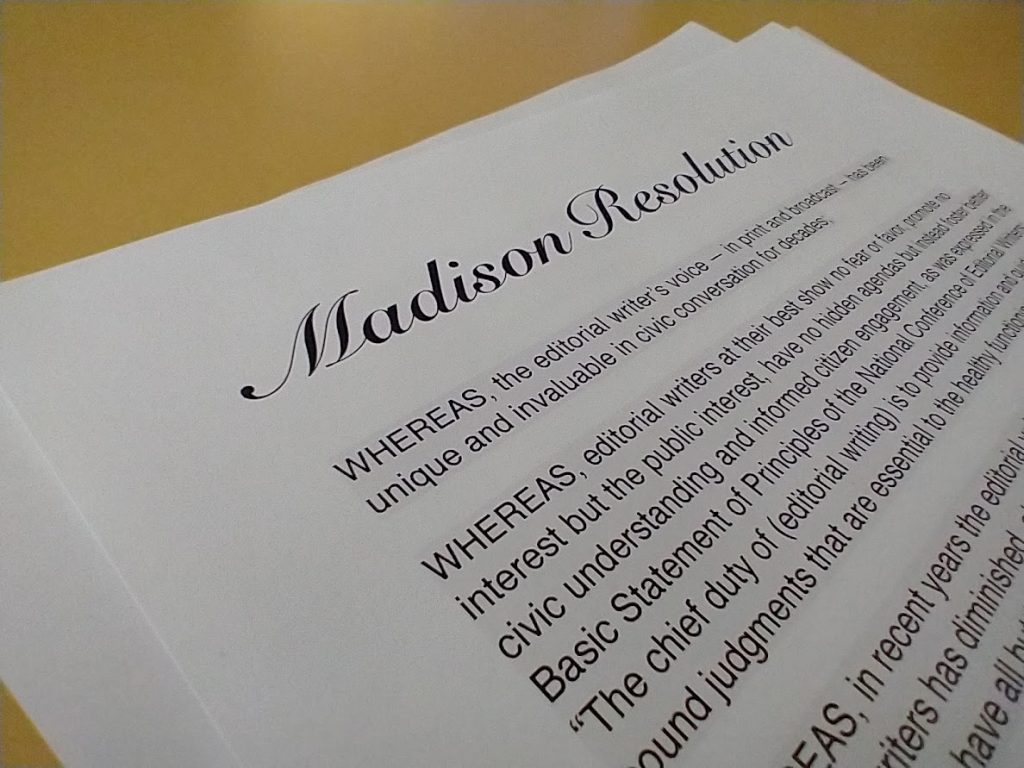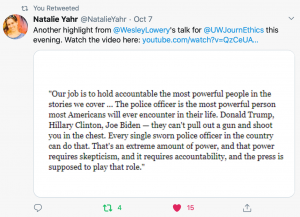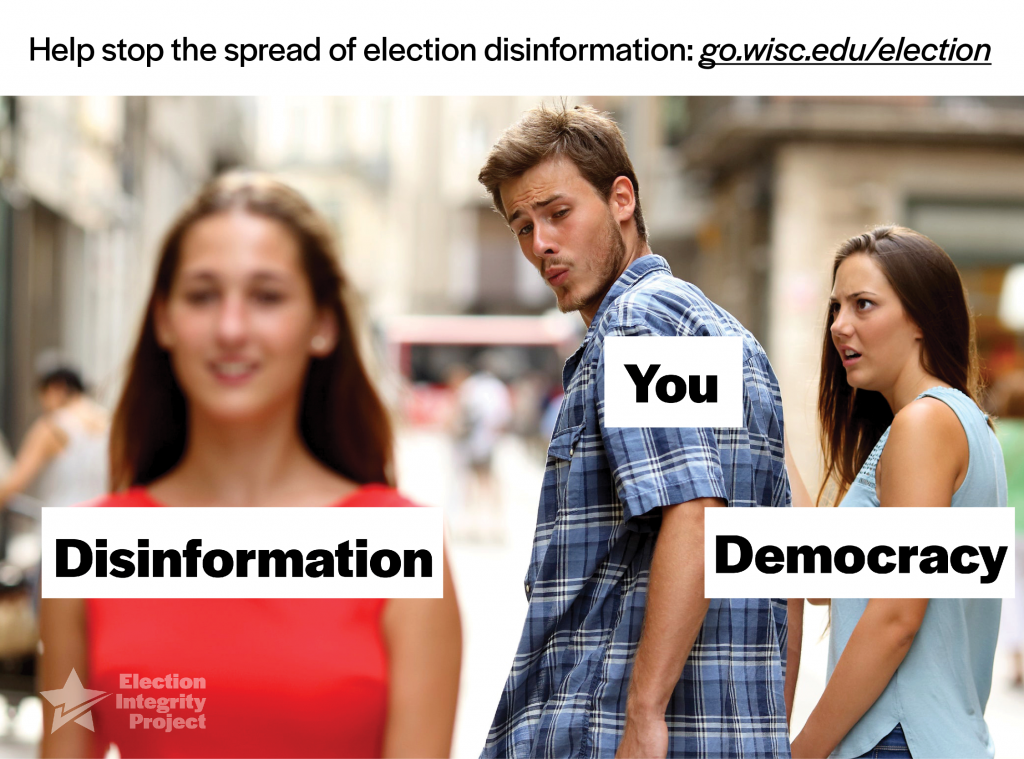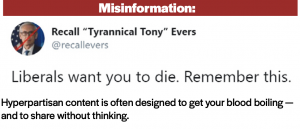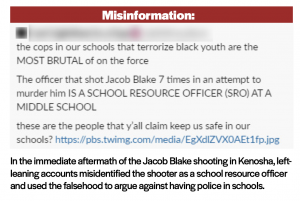
A Q&A w/ Texas Observer editor-in-chief Tristan Ahtone and reporter Pauly Denetclaw
When Texas Observer editor-in-chief Tristan Ahtone announced in October that the 66-year-old Austin-based news nonprofit and magazine would create an Indigenous affairs desk, he pointed to the state’s six state and federally recognized tribes, as well as dozens of tribes that the state has displaced and yet more that the state has decimated or disbanded.
“For whatever reason, news organizations in Texas don’t report on Indigenous communities. The Texas Observer intends to be different,” Ahtone wrote.
The announcement came just three months after Ahtone stepped into the Observer’s top role, and he’d been planning for it before accepting the job. A member of the Kiowa tribe, he’d helped High Country News create its Indigenous affairs desk and later became its first editor. He wasn’t interested in working for an outlet that wasn’t willing to create such a desk.
The Observer has received a year of funding for this reporting from the Economic Hardship Reporting Project, but Ahtone aims to continue the effort after the initial funding runs out.
Leading the reporting is Pauly Denetclaw, a citizen of the Navajo Nation, who spent three years reporting for the Navajo Times. Since joining the Observer in September, Denetclaw has reported on families’ calls for investigations following the deaths of two Navajo soldiers at the Fort Hood Army base and the unprecedented steps tribes in Texas have taken to control the coronavirus. Her latest story reveals that, as U.S. companies race to build the 650,000 new cell towers needed to make 5G cellular networks a reality, Texas tribes have been inundated with building requests, often without enough time to research whether the project would damage a cemetery or a place of religious or historical significance.
“The great thing about reporting in Indian Country is you can just throw a microphone in a room and walk away with a story,” Ahtone said. “I think one of the greatest advantages here, which feels really weird to be an advantage, is apparently we’re the only ones in the room listening. It’s just completely untapped.”
Ahtone and Denetclaw sat down (virtually) with Center for Journalism Ethics contributor Natalie Yahr to discuss why this beat matters, how news media can begin to undo years of harm to Native communities and why writing with Native readers in mind can make for better stories.
These desks are not yet a common thing. What’s the case for why an outlet should consider making this a priority?
AHTONE: You’re right that they’re not exactly common at least in terms of mainstream or legacy outlets, but I think, to date, we’re looking at more than 30 Indigenous affairs desks around the country. There are quite a number. The catch, obviously, is that these aren’t being adopted by large newsrooms like the Washington Post or the LA Times or The New York Times, and especially not television outlets either. I guess I would just say that you’re not serving your audience if you don’t have somebody who covers Indigenous communities. And I guess I would argue that if your newsroom is sort of taking the active stance of not diversifying and ignoring Indigenous voices or expertise in covering Indigenous communities, it’s hard to hide the sort of colonial nature of your news outlet.
DENETCLAW: If you don’t have a designated person to report on Indigenous communities, it’s just not going to happen. Maybe around specific dates like Thanksgiving and Native American Heritage Month, as well as Indigenous Peoples Day, but Indigenous communities should be covered year-round. And I think that is a disservice to the entire community that you are reporting for because Indigenous people live all over the United States in urban areas.
Absolutely. I worked on a story about a year ago about Native American law students here in Wisconsin, and the students I spoke to talked about how, at some point in their schooling, other students told them that they didn’t think Native Americans were still around. What kind of responsibility do you think news media have for that misconception?
DENETCLAW: That narrative is very common. The media is responsible for this narrative that Indigenous people don’t exist, so it is the responsibility of media to tell Indigenous stories and correct the misconception that was created through media.
AHTONE: I would just add to that, in terms of looking at the history of a lot of journalism outlets, 100 years ago, even 50 years ago, we’re looking at outlets that are calling either for the active removal or outright killing or assimilation of Native people. So there is a deep-rooted history, and I think one of the things that we see when it comes to the sort of reckoning that’s going on in journalism right now is that there is one area that journalists refuse to touch, and that is any sort of reconciliation for treatment of Indigenous people.
For those reporters and editors who are working at outlets that don’t yet have an Indigenous Affairs desk, do you have suggestions for how to try to be watching for the stories that matter?
AHTONE: I think it’s just really being aware of what communities are in your state or your coverage area. At NAJA (the Native American Journalists Association), we put together a worksheet to help reporters start looking at different Indigenous nations that they may be reporting on. It’s just got such basic stuff like, How is their government set up? Who’s their primary leader? What is their economy? I think these are all things that editors and reporters just tend to not think about. One of the big examples that I come back to a lot is that there were dozens and dozens reporters out at Standing Rock (for the Dakota Pipeline protests), but we’d talk to folks after Standing Rock who wouldn’t be able to tell you what their economy was or where money came from or couldn’t tell you who famous tribal members were. You sort of got the impression very quickly that there was absolutely no research put into anything else about the tribe other than Standing Rock itself. What we advocate for is that you have to treat coverage of Indigenous communities a lot like foreign correspondence. It’s not an exact sort of one-to-one, but you have to treat Indian Country like an archipelago of different small islands and chains that are connected to each other, but also very, very different from each other.
DENETCLAW: I think that it’s also just really important for folks to understand that Native nations and being Native American is a political classification, not a racial classification. And I think that when that distinction doesn’t get made, then issues around the Indian Child Welfare Act get misreported. And so I think it’s very important to also have a very small understanding of federal Indian law in order to tell these stories accurately.
And how about for outlets whose coverage area might not include a tribal government — how should they be thinking about covering Native Americans in their area?
AHTONE: I would say that it just requires reporters to think differently about Indians. If the idea is that you can only be tied to covering Indian Country if you’re near a reservation but can’t see Indigenous people outside of that setting, then I would argue that that’s something that’s wrong with the editors and reporters.
DENETCLAW: Also, Native folks who live in urban areas do have different issues that they have to overcome versus folks who live in their Native communities or those who live in rural areas. Many places have Indian centers that work on these issues, and that is also a great place to reach out to.
Pauly, this is your first staff job at a non-Native news outlet. What’s different about reporting on Indigenous communities and Indigenous issues for a mainstream audience versus at a Native outlet?
DENETCLAW: Just explaining a little bit more. (When I worked) at the Navajo Times, our tribe’s newspaper, most of our audience were folks from my tribe, so there was a basic level of understanding. And now that I’m writing for a more diverse audience, there’s history that is also worth reporting on, and it’s very interesting.
AHTONE: I would add that, unless you’re reporting directly for your own tribe, the same rules apply for other Native readers. I think one of the big differences is, as reporters, we have a higher standard of work ethic that we have to reach, mainly because we run into people again. You know, Indian Country is technically a small place. It is very rare that I don’t see a source again. That is something that I think non-Native reporters don’t have to worry about. When they get it wrong, they don’t have to come back and deal with the consequences as members of the community.
When you report on Native communities, how do you think about who your audience is and who you’re reporting for?
AHTONE: I always think about our audience as other Native readers. One, it just really helps to sort of think about who you’re serving, regardless of what kind of story it is. But, two, I think it also really helps cut through a lot of stories that are already well-known to the community. And one example I can give you, in terms of where this decision might become really clear: When I was still at High Country News, there were so many stories (on missing and murdered Indigenous women and girls) that were coming out. I would argue that most Indigenous people are very familiar with the issue of missing and murdered Indigenous women and girls and have been for decades. So the story isn’t new, but there were just hundreds of stories suddenly coming out about it. Just doing a story that this thing is happening did not serve Indigenous readers, so we basically didn’t touch it until we had a really good, strong angle from one reporter we worked with that looked at how the system allowed (this phenomenon) to happen more regularly in Indigenous communities that we could essentially point to specific laws and specific agencies as being almost facilitators and collaborators in the process of allowing (it) to happen. So, this gave us an opportunity to lean in and say, “OK, we’re gonna report on this to this too, and here is who is accountable for it, or here is a really good starting point on who’s accountable for it.”
DENETCLAW: Yeah, I’ve actually been thinking about this a lot recently because I am a new reporter to working at a non-Native news outlet. And so it was really important for me to really understand that I am reporting for Native people in Texas. That is my audience.
Is there anything else you want to add?
AHTONE: We’re looking forward to continuing to do this work. I feel like Pauly is sort of in the unenviable position of not only having to develop the beat completely, but having to be an ambassador for an industry that has been historically pretty horrible to the communities here in Texas. So it’s not only building trust but also convincing folks that journalists aren’t jerks. I think that’s an ongoing process.
DENETCLAW: And this is not an uncommon issue. The way that news outlets have historically treated Indigenous people is awful. Building that relationship back is why I love journalism and why I choose to continue to do the work that I do. And so I’m super excited for the coming months when I’m able to hopefully meet people in person and (say), “We are trying to do something different.” Healing those relationships is important. And I’m trying. I will continue to try. I will try for years, and I’m happy to do that work because I think journalism is so powerful and there is something so healing about having your community’s stories written about in a way that is truthful, authentic, and well-written and well-reported.
The Center for Journalism Ethics encourages the highest standards in journalism ethics worldwide. We foster vigorous debate about ethical practices in journalism and provide a resource for producers, consumers and students of journalism. Sign up for our quarterly newsletter here.



